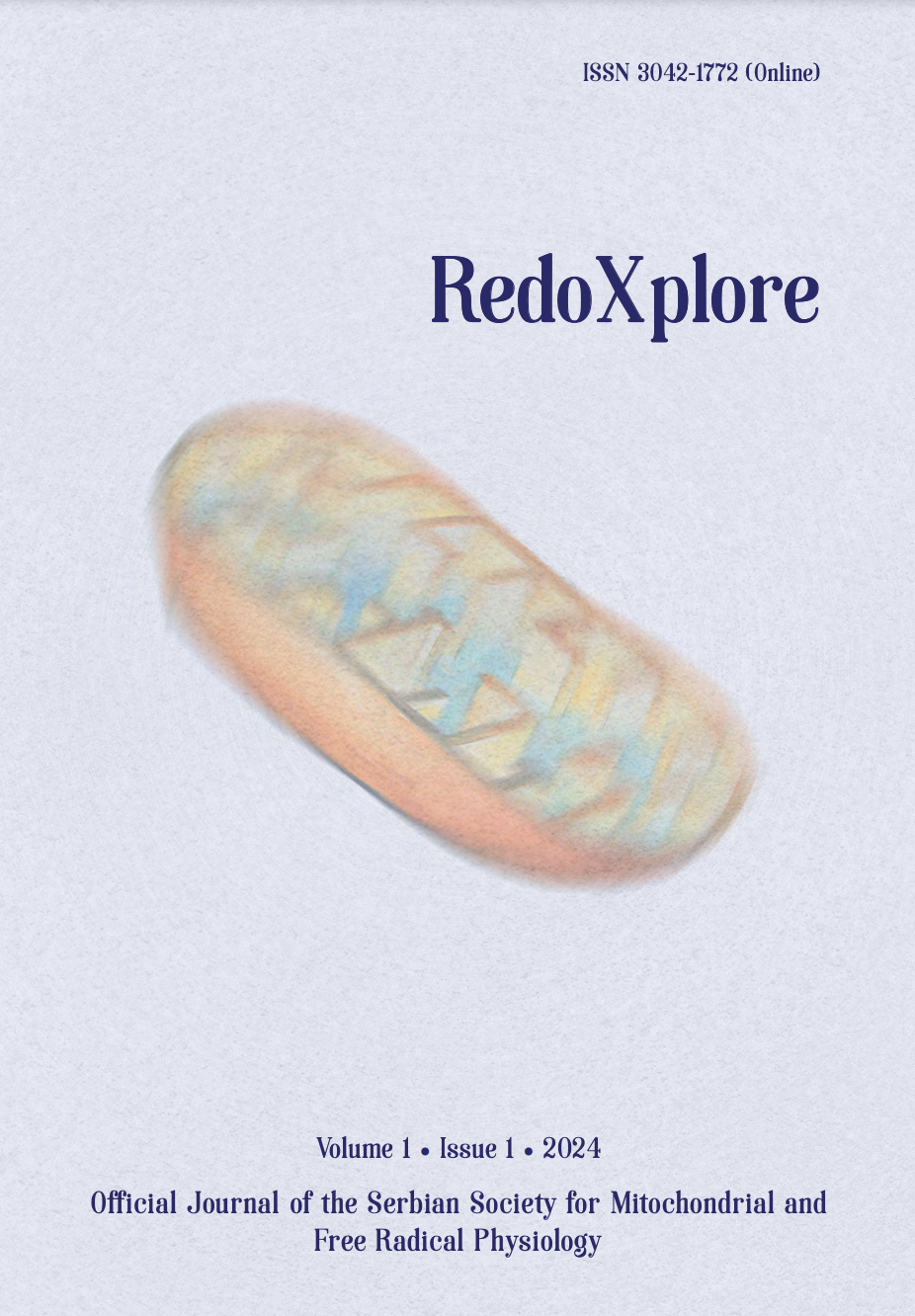
More articles from Volume 1, Issue 1, 2024
REDOX AND METABOLIC REPROGRAMMING OF BREAST CANCER CELLS AND ASSOCIATED ADIPOSE TISSUE - THE CORNERSTONES OF ADAPTIVE TUMOUR BEHAVIOUR
INSULIN MODULATES MITOCHONDRIAL STRUCTURAL AND FUNCTIONAL MOSAICISM IN BROWN ADIPOCYTES
NITRITE MITIGATES OXIDATIVE BURST IN ISCHEMIA/REPERFUSION IN BRAIN SLICES
NITRIC OXIDE, SUPEROXIDE AND PEROXYNITRITE – REDOX REGULATION OF THE CARDIOVASCULAR SYSTEM BY NITRO-OXIDATIVE STRESS AND S-NITROS(YL)ATION
DIETARY NITRATE AS PIVOT ON THE GUT MICROBIOTA-HOST REDOX COMMUNICATION
PREPARATION FOR OXIDATIVE STRESS: HISTORY, RECENT ADVANCES AND FUTURE DIRECTIONS
Faculty of Medicine, University of Brasília , Brasília , Brazil
Editor: Bato Korac
Published: 29.08.2024.
Keynote lectures
Volume 1, Issue 1 (2024)
Abstract
Many animal species are remarkably resilient to the harmful conditions of hypoxia and reoxygenation, a phenomenon widely observed across many species and environmental settings. The ability to survive oxygen deprivation and reintroduction without significant cellular damage is partially attributed to the upregulation of antioxidants, a strategy termed "Preparation for Oxidative Stress" (POS). The concept of POS is that by producing more antioxidants under hypoxia animals would anticipate the eventual and potentially damaging reintroduction of oxygen. Historically, the specific mechanisms through which POS is activated remained elusive. Over the past decade, significant advancements have been made in understanding POS at a molecular level and in identifying its widespread in the animal kingdom. Notably, a detailed molecular mechanism for the activation of POS under conditions of low oxygen availability has been proposed, emphasizing the role of reactive oxygen species in modulating antioxidant response through redox-sensitive transcription factors. Furthermore, recent research has demonstrated the occurrence of POS in free-ranging animals under completely natural settings, confirming its ecological and physiological relevance. Despite recent advancements, some aspects of POS remain underexplored and should be prioritized in future research. These include the experimental validation of the mechanisms proposed to underlie POS and the assessment of the relevance of POS in multi-stressor scenarios, particularly to understand how organisms cope with combined stressors in fluctuating environments.
Citation
Copyright

This work is licensed under a Creative Commons Attribution-NonCommercial-ShareAlike 4.0 International License.
Article metrics
The statements, opinions and data contained in the journal are solely those of the individual authors and contributors and not of the publisher and the editor(s). We stay neutral with regard to jurisdictional claims in published maps and institutional affiliations.






